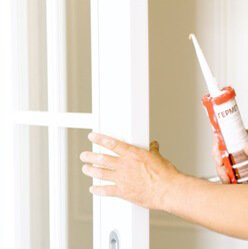Currently Empty: $0.00

Floral
Floral materials are elements typically used in floral arrangements, bouquets, and various decorative purposes. They encompass a wide range of natural and artificial components, each contributing to the overall aesthetics and beauty of the arrangement.
Fresh Flowers: Fresh flowers are the centerpiece of most floral arrangements. They come in various colors, shapes, and sizes. Common examples include roses, tulips, daisies, lilies, and orchids. Fresh flowers provide natural beauty, fragrance, and vibrant colors to arrangements.
Foliage: Foliage, such as leaves, branches, and greenery, adds texture and depth to floral designs. Popular choices include eucalyptus, ferns, ivy, and various types of grasses. Foliage can be used to frame and complement flowers or serve as a standalone element in some arrangements.
Filler Flowers: These are smaller blooms or decorative elements that fill in gaps between the larger flowers. Baby’s breath, statice, and wax flowers are commonly used as fillers. They add volume and delicate detail to arrangements.
Dried Flowers: Dried flowers like lavender, strawflowers, and statice offer a rustic and long-lasting charm to floral displays. They are often used in dried flower arrangements, wreaths, and potpourri.
Artificial Flowers: Artificial or silk flowers are made from synthetic materials but are designed to mimic real flowers. They come in various qualities, and high-quality silk flowers can be remarkably lifelike, making them ideal for long-term arrangements or for people with allergies.
Ribbons and Bows: Ribbons and bows can be used to tie together bouquets and add a decorative touch. Satin, organza, or burlap ribbons in various colors and patterns are popular choices.
Vases and Containers: The choice of vase or container can greatly impact the overall look of a floral arrangement. They come in various shapes, sizes, and materials like glass, ceramic, metal, or even wood.
Floral Foam: Floral foam, also known as oasis foam, is used to anchor flowers in arrangements and ensure they stay hydrated. It comes in different forms, such as bricks, spheres, or cages, and can be cut to fit the container.
Decorative Elements: Additional decorative elements like crystals, beads, feathers, or decorative wire can be incorporated for a personalized touch and to match specific themes or occasions.
Scented Additions: For added fragrance, some floral arrangements may include scented elements like dried herbs, cinnamon sticks, or essential oils diffused into the arrangement.
Floral materials are versatile, allowing for endless creativity in floral design. The choice of materials depends on the occasion, personal preference, and the desired aesthetic outcome of the arrangement.




